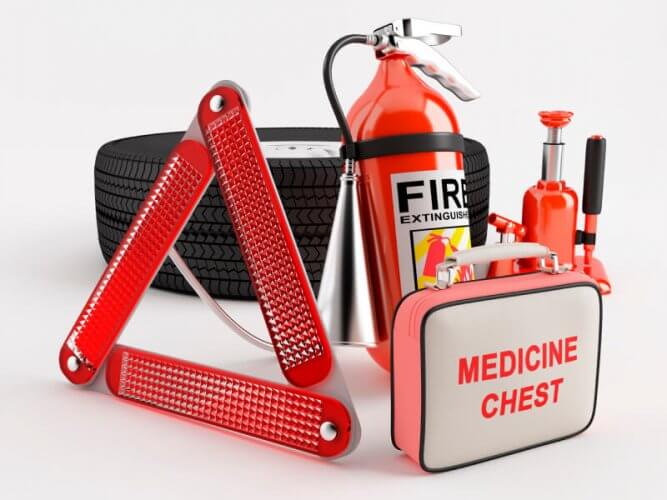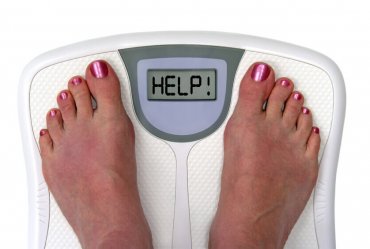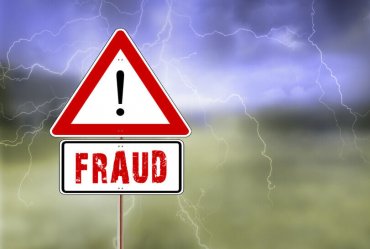
When traveling long distances by car, it’s important to prepare for emergencies. Packing a roadside survival kit and having reliable car insurance can give you peace of mind and help you handle unexpected situations on the road.
If you’re like most people, when traveling halfway across the country by car to visit your friends, you may not have a roadside emergency kit. It’s not unusual for you to focus most of your attention on things like suitcases and car-friendly snacks. And, stocking a roadside survival kit may be the last thing on your mind – unless you get stuck somewhere without an important item that could make a difference in the outcome.
Anytime something unexpected happens, we count on our cellphones to get us out of trouble. But, what if you break down on a dark, desolate stretch of road with no cell signal and you have a blowout or a dead battery, which means no emergency flashers and no way to reach
American Automobile Association (AAA)? What then?
Things could get awfully spooky in a hurry. Being stuck in the boonies in the middle of the night without a flashlight or flares could easily be your undoing, especially if your vehicle is partially blocking the road.
That’s why so many safety agencies, including the California Office of Traffic Safety (OTS), recommend carrying a well-stock roadside emergency kit in your car at all times, although the majority of us don’t even carry any of the basic items that could add safety to your commute as well as get you back on the road quickly.
Roadside Survival Kit: What You Can’t Leave Home Without
The Office of Traffic Safety (OTS) suggests these 10 basic emergency car kit items:
- Jumper cables
- Flashlight with extra batteries
- Reflective warning triangles or flares
- First-aid kit
- Water and non-perishable snacks
- Blanket
- Gloves, hat, and extra clothing
- Multi-tool or utility knife
- Duct tape
- Tow strap or rope
You can simplify things by purchasing a pre-assembled emergency roadside kit from a number of reputable, brand-name companies, including online. These kits tend to be small enough to carry in the trunk or back seat of your car. That way, you won’t have to pull a U-Haul to carry everything on the list.
Once you’ve purchased your pre-assembled kit, don’t wait until you have a roadside emergency to open it and peek inside. Familiarize yourself with its contents ahead of a crisis so you know how to use each item.
Extra Handy Items You Might Want to Include
In addition to the basic items, there are some other items that can come in handy during a roadside emergency. For instance:
- Tow strap or tow rope for towing your car
- Bungee cords to secure loose items
- Tire repair kit to fix flat tires on the go
- Reflective warning triangle and safety cones to alert other drivers of your presence
- Safety hammer to break glass windows in case of emergency
- Reflective safety vest for visibility in low light conditions
- Emergency whistle to signal for help
- Sting relief pad to treat insect bites and stings
Remember, you can customize your emergency roadside kit based on your specific needs and driving conditions. Keep it well-stocked and up-to-date, and you’ll be prepared for any roadside emergency that comes your way.
Weather-Specific Items for Your Car Emergency Kit
When creating a car emergency kit, it’s important to think about weather-specific items to make sure you’re prepared for any unexpected conditions you might encounter on the road.
If you live in a region with cold temperatures or snowy weather, you’ll want to include winter items such as an ice scraper and snow brush, warm emergency blankets, gloves, hats, and socks, and hand warmers. In case you get stuck in the snow, a portable shovel and sand or kitty litter can help provide traction on icy roads.
For hot weather, it’s essential to stay hydrated, so extra water bottles are a must. Additionally, you’ll want to include sunscreen and a hat to protect yourself from the sun’s harmful rays, and a portable fan or misting bottle to help you stay cool.
In rainy weather, a rain poncho or waterproof jacket can keep you dry, while a reflective umbrella can help you stay visible in low-light conditions.
Remember to regularly check and update your car emergency kit to ensure you have everything you need for the current weather conditions in your area.
Pack Your Car with These Essential Family Items
It’s always a good idea to be prepared for any unexpected situation that may arise while you’re on the road. While emergency car kits typically include items for roadside safety and basic tools, it’s also important to consider personal and family needs. Whether you’re on a road trip or simply commuting, having the right items on hand can make a significant difference.
In a perfect world, roadside assistance would always be readily available. But in reality, situations arise where you may need to rely on yourself and others to ensure your safety. That’s why a good quality roadside safety kit is a great start, but don’t forget to include personal and family items such as:
- Extra clothing for colder weather conditions
- Medications and any necessary medical supplies
- Portable phone charger or power bank
- Snacks and water for sustenance
- Comfort items such as a favorite book or music to keep you and your family calm and entertained
Having these personal and family items in your car emergency kit can provide peace of mind and help you feel more prepared for any situation on the side of the road.
Communication and Navigation in Emergency Situations
In addition to having the best roadside emergency kit, communication and navigation tools are also important in emergency situations. It’s a good idea to keep a charged phone and charger in your car at all times, as well as a map or GPS system in case you get lost. For longer trips, consider bringing a portable GPS system or a paper map of the area.
If you experience an issue on the highway, having a good place to pull off the road can make a big difference in your safety. If possible, try to pull over to the right side of the road, out of the way of traffic. Additionally, if you’re traveling during the day, make sure your vehicle’s hazard lights are on to alert others of your presence.
If you’re driving an SUV or another type of larger vehicle, be aware of low bridges or overpasses that may cause issues. Always follow posted clearance signs and avoid any areas that may be too low for your vehicle.
Remember, communication and navigation tools are essential for staying safe on the road, especially during emergency situations.
Tips for Organizing Your Emergency Supplies
When it comes to organizing your roadside emergency kit, the key is to make sure everything is easily accessible and visible. You don’t want to be fumbling around in the dark trying to find what you need.
One way to keep everything organized is to use a clear plastic container with compartments. This allows you to see everything at a glance and find what you need quickly. You can also use labeled ziplock bags or small pouches to keep similar items together. Just make sure to keep the most important items, such as a first aid kit and tools, within easy reach.
Importance of Preparedness for Roadside Emergencies
Having an emergency roadside kit is a crucial part of being prepared for unexpected situations on the road. It can make a big difference in ensuring your safety and the safety of others in case of an emergency.
However, it’s important to remember that being prepared also means having the right auto insurance coverage.
At Freeway Insurance, we understand the importance of being prepared and having reliable coverage that fits your needs and budget. Contact us today for a free auto insurance quote and let us help you get the coverage you need for peace of mind on the road.



